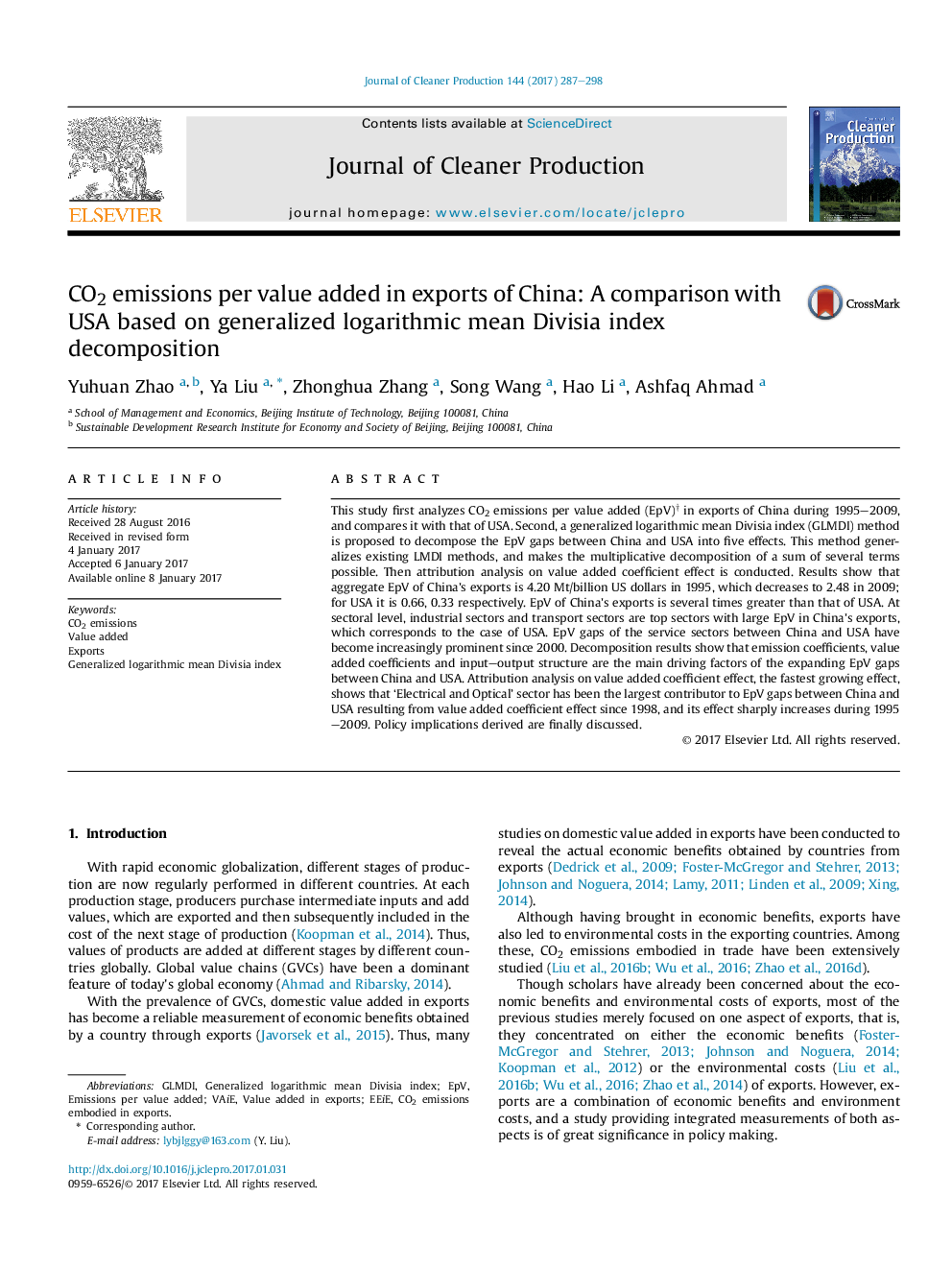| Article ID | Journal | Published Year | Pages | File Type |
|---|---|---|---|---|
| 5480286 | Journal of Cleaner Production | 2017 | 12 Pages |
Abstract
This study first analyzes CO2 emissions per value added (EpV)â in exports of China during 1995-2009, and compares it with that of USA. Second, a generalized logarithmic mean Divisia index (GLMDI) method is proposed to decompose the EpV gaps between China and USA into five effects. This method generalizes existing LMDI methods, and makes the multiplicative decomposition of a sum of several terms possible. Then attribution analysis on value added coefficient effect is conducted. Results show that aggregate EpV of China's exports is 4.20 Mt/billion US dollars in 1995, which decreases to 2.48 in 2009; for USA it is 0.66, 0.33 respectively. EpV of China's exports is several times greater than that of USA. At sectoral level, industrial sectors and transport sectors are top sectors with large EpV in China's exports, which corresponds to the case of USA. EpV gaps of the service sectors between China and USA have become increasingly prominent since 2000. Decomposition results show that emission coefficients, value added coefficients and input-output structure are the main driving factors of the expanding EpV gaps between China and USA. Attribution analysis on value added coefficient effect, the fastest growing effect, shows that 'Electrical and Optical' sector has been the largest contributor to EpV gaps between China and USA resulting from value added coefficient effect since 1998, and its effect sharply increases during 1995-2009. Policy implications derived are finally discussed.
Keywords
Related Topics
Physical Sciences and Engineering
Energy
Renewable Energy, Sustainability and the Environment
Authors
Yuhuan Zhao, Ya Liu, Zhonghua Zhang, Song Wang, Hao Li, Ashfaq Ahmad,
